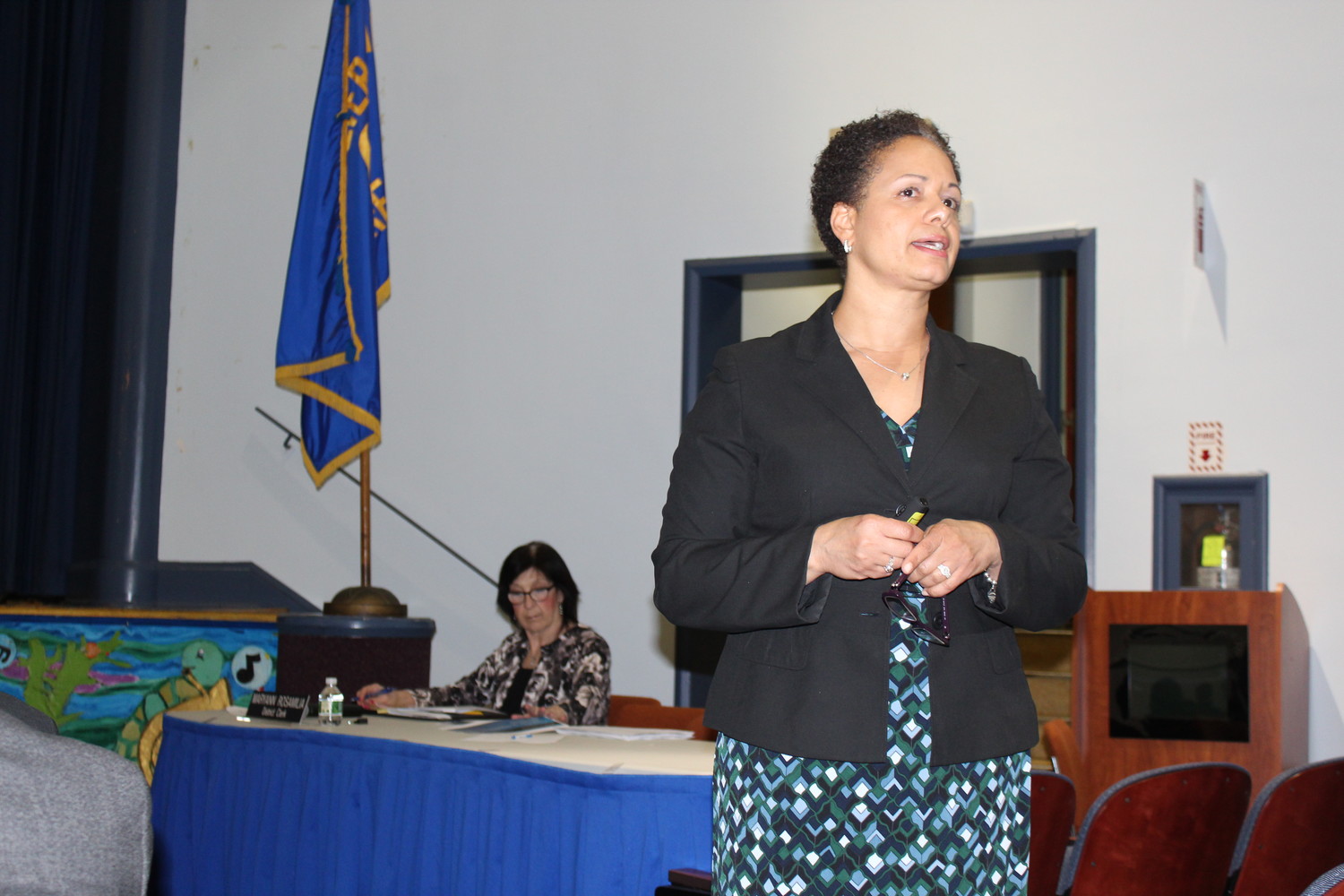V.S. districts discuss safety in wake of Fla. school shooting
‘Our board has invested millions in security’
Posted
Following the school shooting in Parkland, Fla., on Feb. 14, in which 14 students and three teachers died, Valley Stream parents are expressing concern about school safety, and administrators are addressing their worries.
District 13
In School District 13, Superintendent Constance Evelyn updated the public about the schools’ safety and security plan at a Board of Education meeting on Feb. 27.
“We had planned to provide this update in March, but we moved the update up because of some questions that arose around district safety,” said Evelyn, who spoke for about 15 minutes.
The district increased the support services at the schools for the 2017-18 school year. It also has several inclusive special education programs, and enacted Yale University’s RULER Program last year to teach students how to understand their emotions. RULER stands for recognizing, understanding, labeling, expressing and regulating, and was developed by Yale’s Center for Emotional Intelligence for use in schools. The program was already in place in the other Valley Stream elementary school districts.
District 13 also focuses on restorative practices rather than punitive practices, according to Evelyn, which means that a student cannot be suspended for more than five days unless the district conducts a superintendent’s hearing. “I can still report in the 2 1/2 years I’ve been here that I have not had the need to conduct a superintendent’s hearing,” she said.
To promote safety, each school in District 13 has a single point of entrance for guests, where a greeter signs them in. The district also trains staff and conducts regular emergency drills in accordance with New York state law.
District safety measures will increase as projects from a bond passed in 2014 are completed, including a new public address system, which allows a principal to speak privately with every classroom and to input codes to alert the police about an emergency. These should be installed in each school by the end of the school year — possibly as early as the end of this month. As part of the 2018-19 budget, the district will install amplifiers to improve cellphone service around the main offices of each elementary school.
The district is also using $1.1 million from the Smart School Bond to fund upgrades to the school’s security systems, including new interior and exterior cameras, key card access for teachers and employees, and a program that scans licenses against police databases. The district is also considering using funds from the bond for a panic button that triggers a lockdown, a district app for security monitoring and Rave system integration that would allow for an immediate dispatch of Nassau County Police Department officers in an emergency and enable them to access schools’ security cameras. Those improvements may take time to implement.
“[The] State Education Department does not have the capacity to quickly review all of the projects that are going through these schools,” Evelyn explained.
District 24
Students in District 24 went home with a letter on March 2 from Superintendent Edward Fale detailing measures the district is taking to improve security, such as installing a security guard at each building, purchasing additional cameras from the Smart Schools Bond, and possibly installing electronic door locks in each building.
“. . . We are reviewing our procedures and taking action to improve our already effective system of controlling access to our buildings,” the letter read. “We are working closely with the Nassau County Police Department and Nassau BOCES.”
District 30
Every year in District 30 schools, the Board of Education reviews the health and safety plan. The public then has a 30-day opportunity to read it and present concerns to the board.
The community also voted in May to use reserve funds to install keypad doors that lock automatically. Guests were already limited to one central entrance with a buzzer. They also must sign into the main office before they are allowed throughout the building.
“We’re always trying to stay abreast on what’s going on,” Superintendent Nicholas Stirling told the Herald.
Stirling met with members of the NCPD on Feb. 27 to discuss implementing the Rave system, which might take time to be installed, the superintendent said.
“There’s always a process . . . [when] people have to get it installed,” Stirling said, adding that the district would have to look into what would be required to set up the system at each school and find a way to fund it.
Central High School District
At every school in the Valley Stream Central High School District, there is a supervisory aide — many are retired police officers. Each school is also equipped with hundreds of interior and exterior cameras.
Under the Smart Schools Bond, the district replaced classroom doors with smaller windows that would hide students better in the case of an emergency, and each principal has a button to lock down a building. The district also installed strobe lights outside the schools to alert any student or faculty outdoors that there is an emergency.
“Our board has invested millions in security,” Superintendent Bill Heidenreich said. “Whenever there’s a tragedy, we evaluate what we do because we’re always looking to improve safety and security in the schools.”
Heidenreich will also be working with Nassau County police, he said, to look into implementing the Rave system and potentially scan licenses against police databases. The district was scheduled to continue the discussion of school safety at a work session on Tuesday, at 8 p.m., at Memorial Junior High School.
Report an inappropriate comment
Comments






